HOKO was launched on July 1 and became #1 on Product Hunt on that day. The launch has catapulted our site and server into unimaginable heights:
In five days, more than 10k unique users visited our website.
But we eventually realized that the true prize is beyond metrics:
The real value is in the feedback from our audience (developers) and the experience.
This is the story of our Product Hunt launch, with numbers, hacks, and much more.
Meeting with Bram
Back in April, we had the chance to meet with Bram Kanstein, the creator of the most upvoted product of all time. Since his launch, he has been recruited by the site for a Community Manager role and was visiting Seedcamp’s office in London to talk about Product Hunt. He told us - among many practical tips - the following facts:
- Once featured, products cannot be reposted - with exception to significant updates or product pivots.
- Product Hunt receives 100-200 submissions every day, but only 30-50 make it to the front page.
- The Product Hunt newsletter subscribers don’t use the Product Hunt site, they form an almost completely different audience from the 100K active monthly web user.
This was the aha moment:

Those 30-50 new products get a lot of attention - and the higher ranking they achieve, the bigger slice they get from the pie. If we are lucky, we thought, we can get a massive traffic from the site, then from the daily and weekly newsletter subscribers.
It’s not a winner takes all scenario, but the rules heavily encourage making an effort for a good launch.
So we have read everything about the theory of a successful launch to make ours count.
Product Hunt
Product Hunt is a daily ranking of new products. The ranking is based on the followings:
The weighted sum of upvotes on a product. But not all upvotes are equal: the ranking algorithm takes into account the "rank" of users (veteran users > new users) and the circumstances of the upvote (voting on Product Hunt’s main page > voting on a product’s page after arriving through a direct link).
The time elapsed since the product was hunted. As a product grows older on the site, the less value its upvotes will add to the product’s ranking.
"Hidden factors". The number of comments is supposedly one of them, but the Product Hunt community doesn’t reveal the details. Sorry, buddy!
Are you hunt-worthy?
The zero step in a Product Hunt launch is to have a valuable product. Before you do anything else:
- Make sure that your product is good and interesting.
- Make your landing page simple and attractive
- Write a kick-ass, no-bullshit tagline: make it catchy and avoid clichés. Make it large and pit it near the top of the page.
- Show your product to Product Hunt influencers via Twitter. If you don't receive positive feedback, ask them: Why not? Change your landing page based on feedback.
Preparations
What we have learned about the ranking algorithm led us to a conclusion: our #1 goal is to create the best possible start on Product Hunt with 30-40 upvotes within a few minutes.
For this, we had to have complete control over HOKO's submission and make the launch noisy immediately.
To achieve this, we recruited an early community around HOKO through startup listings, the thigh-knit network of Faber-Ventures and Seedcamp, and our social media presence. Once we figured out our community, we have prepared every single message that we needed to mobilize them.
But don’t ask anyone to upvote you.
It’s against the guidelines, and Product Hunt has a detection system for voting rings and spam which might trigger a penalty on your position and even removal, in the worst case.
Prepare for discussion
Driving people to the Product Hunt submission is only the first step. After that, at least we hoped, HOKO will generate a discussion inside and outside of Product Hunt, and we had to be on top of that.
Participating in a Product Hunt discussion is only open for "invited" users and the recognized makers of the concerned product (the makers are highlighted by the M badge). It takes only a DM or email to get the M badge from a Product Hunt member, but we wanted to be 100% sure that we can write comments from the first second, so we secured our commenting privileges through invites beforehand.
Okay, we could write comments. Now, what? We drafted our self-introductions so we wouldn't have to write them on the launch day and prepared ourselves for the questions of the community. We focused on two question groups: the most likely and the hardest to answer questions. Answering this kind of questions takes a lot of time in general, but we could cut this time much shorter by drafting answers ahead.
But discussions will happen outside of Product Hunt. So it was essential to follow every "HOKO" mention in social media and react on them accordingly.
More about timing
At this point, we had to decide when we want HOKO to launch. It's a crucial part of the launch since its heavily affects your ranking.
The timing factor was introduced after Product Hunt’s launch to address a serious problem: products posted in the afternoon or evening started at the bottom, buried by submissions earlier in the day. Each “Product Hunt day” starts at midnight PST, which is 8 AM in London, 9 AM in Berlin.
Still, we aimed our submission to the early hours on Product Hunt, because, we figured, it’s easier to get into a top position in the morning - which translates to more organic attention to the product and results more traffic and upvotes for the higher ranked products. Similarly to how the search traffic is distributed among sites ranked higher and lower after a query in Google.
It’s hard to announce the “right time” for the Product Hunt launch but based on the non-representative amount of data we gathered
The window of opportunity is between 2-8 AM PST (10 AM - 4 PM in London) for a highly successful launch.
Submission
It’s highly recommended to find a Product Hunt user with the authority to submit your product directly to the site, by skipping the moderator queue. Who can post? The number of “Hunters” is steadily increasing by time, you can see them on the All-time Leaderboard.
The hunter’s followers will receive a notification in an email about the submission. The more followers the hunter has (the more people get notification), the better.
But as a last case scenario you can do it yourself via a webform.
After submission
Once the submission was done, we used every communication channel at our disposal to reach our early community: our blog and social media channels, social media groups (on LinkedIn, Facebook, and Goolge+), emails, Slack channels, and online community boards, such as Reddit and Hacker News.
When that's done, we started engaging more with Product Hunt influencers on Twitter. But only as much as it's okay without forcing it. There are plenty people in the Product Hunt community whom we can relate to effortlessly, so we focused on them and made real conversation. Make it honest, and you will have a lot of fun while helping your product!
PROTIP!
During our research, we have learned useful practices for a Product Hunt launch, which we absolutely recommend to everyone else:
Busy hours: If you decide to push your launch heavily, take into consideration the geographic location and time zones of the Product Hunt users. In the small hours (2-4 AM PST), you can get votes from European users. West coast users tend to check Product Hunt on their morning commute (8-10 AM PST), which forms another great wave of votes. East Asia and Australia create a third wave in the night (8+ PM). By concentrating on these hours, you can maximize the effectiveness of your campaign.
Tweet like a pro: in your social media activity, concentrate on the most influential users. You can identify the most influential PH users (e.g. here), and concentrate on them.
Create a loop: Prepare transactional emails for the newly registered users to remind them to go back to PH and contribute to the conversation about your product.
Server uptime: Make sure your server is prepared for the extra traffic. Monitoring your server uptime (e.g. with Pingometer) is always handy but essential on your launch day.
Analytics: Have real-time analytics setup for all referrals, sign-up and install conversions ○ E.g., Clicky and Google Analytics for instant tracking.
Visitors to leads: Leadfeeder shows which companies visit your landing page and what they do there. Create an option for email signups - save them as leads for future conversion.
Exclusive offer: it can differentiate your product from the rest with a yellow star next to its name. As the PH FAQ said it:
- Make it special. Offer a meaningful discount (if it’s a paid product) or early access* not available to the general public.
- Introduce the exclusive. Your landing page should mention the offer (e.g. “Hello, Product Hunters! Get 30% off with code, ‘PRODUCTHUNT30’”). Feel free to keep it simple, or get creative like our friends at Algolia.
- It has to be new. Like all posts on Product Hunt, the product must be new to the community. Sorry, no reposts.
Welcome the hunters: it’s a nice tradition to “dress up” landing pages for the visitors from Product Hunt - which helps your onboarding since it gives a friendly feel to your site. To collect ideas, check out the custom landing page we created for the occasion. Use these Product Hunt visuals
Plan B: It’s always a good idea to prepare well ahead for the unlucky instance of getting hunted without prior notice. As a security measure, Create an alert for this event so you can react quickly in need. We recommend Product Hunt Alert.
Read more
I seriously recommend this to everyone who has the slightest interest in building products. Here is our shortlist of the must-read literature:
- Product Hunt - Pro Tips
- Product Hunt - FAQ
- The most upvoted product of all time
- Startuplister - tips
- Cool guide for B2B products
- "Say thank you loudly!"
Investing a few days into creating a launch plan will yield a high return. But whatever you decide to run your launch campaign. never forget the One Rule: never ask for upvotes.
So, how did our launch go?
We had a good technology and a complete launch plan in our pocket, but we still had doubts. Other deep linking startups were ahead of us with months of business operation and, in some case, millions in the bank. We have been perfecting an almost-ready HOKO for months chasing the product-market fit and adapting to the changing deep linking landscape (see more about Google and Apple): we have been building a product.
But we didn't know if we arrived at the party in time.
Tangible results
Yes, we did.
We shared this report after 12 hours:
Wow! After 12 hours on @producthunt: 484 upvotes, 35 comments, 4481 uniques, 97 registrations. Love you, hunters! pic.twitter.com/GtS4Yx5fHE
— HOKO (@hokolinks) July 1, 2015
And this is the report after the first 24 hours:
- 40 comments and 600 upvotes on Product Hunt (highest for any deep linking product)
- 6643 unique users with 2.1% sign-up rate on our website
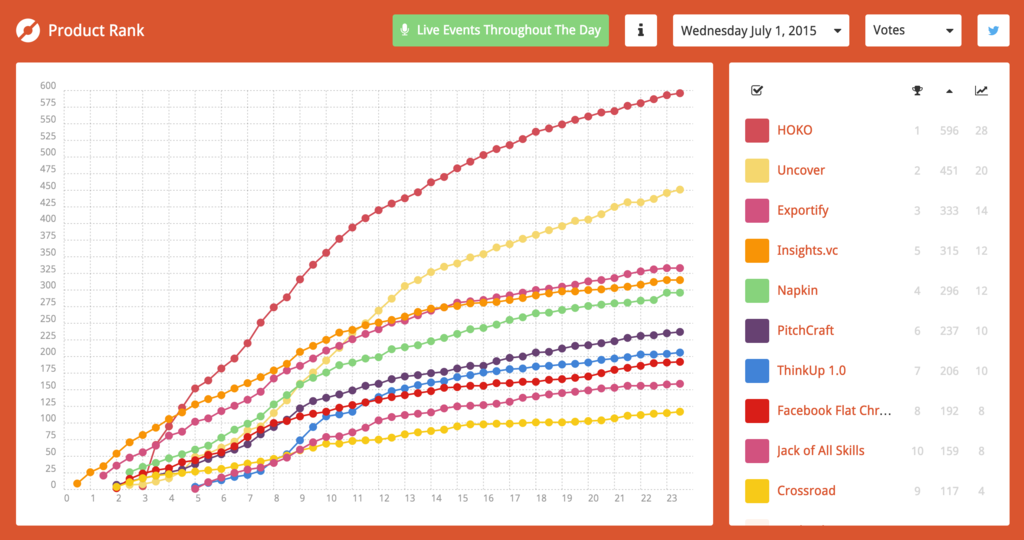
Oh. My. God.
Edit: Since this story was published, the Product Hunt-effect hasn't stopped:
HOKO has 788 upvotes and 47 comments on Product Hunt &
HOKO on the "official Tools for Marketers & Growth Hackers collection.

Invaluable feedback
The real value of the day was connecting to developers, product enthusiasts, and fellow entrepreneurs.
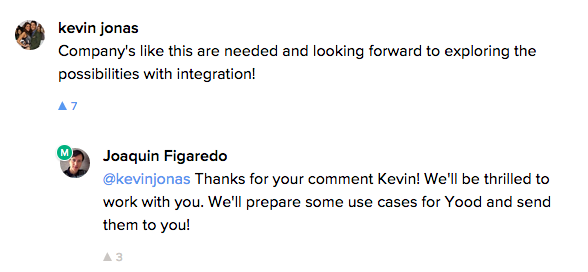
Real-life feedback reassured us that our approach hit the nail in the head: developers need an easy-to-use solution that saves them days of experimenting.
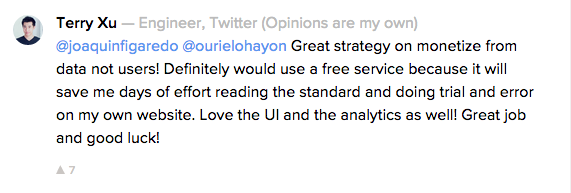
We have a lot of work ahead of us:
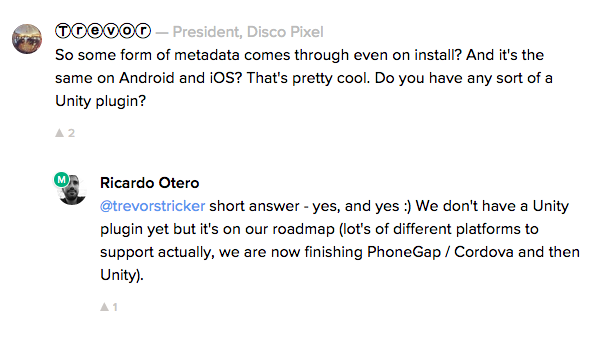
But it's totally worth it:
Had some great on-hands help from an engineer at @hokolinks, they really did make deeplinking super simple!
— Kevin Xu (@imkevinxu) July 1, 2015Thank you for the amazing experience!
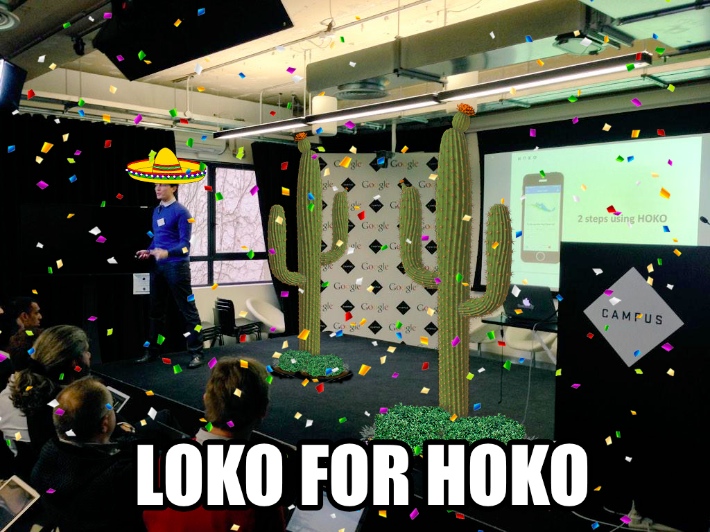
make your app ready for deep linking! Learn more about HOKO.
